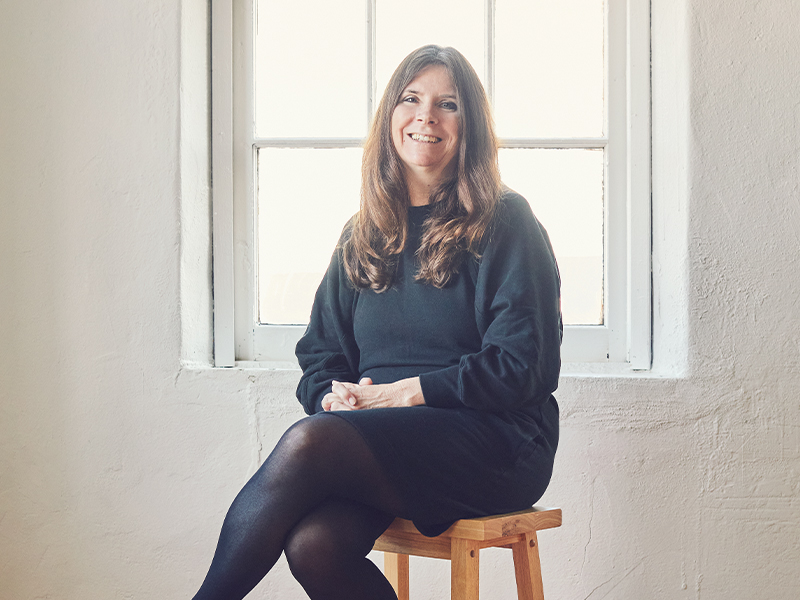
Ten years ago, while BlackBerry Ltd. was moving from its head office near the University of Waterloo campus to a complex of three office buildings in the city, it took the opportunity to use feedback from employees to influence how it built its new space.
A wellness room and a spirituality room were among the requests from employees. In addition to the new offices in Waterloo, Ont., the organization also added these rooms to its offices in B.C., Mississauga, Ont., Ottawa and Halifax. Basically, the rooms are empty spaces that employees can occupy for any purpose related to wellness or spirituality. They include a massage table and a fridge (so breastfeeding mothers can store their pumped milk, for example), while the spirituality rooms also include an area to wash hands or feet and a kneeling bench for prayer.
Read: Hootsuite incorporating wellness, DEI into redesigned workspace
“We want to be collaborative,” says Robin Cox, BlackBerry’s director of global benefits. “We want to encourage innovative and creative thinking. And we really do encourage people to take breaks from the time at their desks.”
The break room
There are multiple reasons for a company to introduce a wellness or spirituality room within its office spaces, says Lisa Belanger, chief executive officer of ConsciousWorks.
“The most sustainable way to function, to work, is having breaks. And in order to get an effective break, you actually have to, ideally, remove yourself from where you are. So even if it’s five or 10 minutes, you’ll get a more effective break by removing yourself and going into a different environment.”
If an employee has a migraine, a wellness room offers a space to escape sensory overload. For new mothers, the room is a private area where they can pump milk. And a spirituality room allows Muslim employees a place to pray.
“Employers are actually providing this really great resource to allow for diversity in their work environment,” says Belanger. “For example, accommodating different religions, accommodating life stages, allowing for an effective break strategy — and it’s an incredibly effective use of space for the attraction and retainment of employees.”
Read: Dexcom Canada leveraging employee well-being, engagement as attraction, retention tools
However, nearly three years into the coronavirus pandemic, many employees may not be returning to onsite workplaces, so it’s important these types of wellness initiatives are company-wide, she adds, noting one of the easiest ways to encourage at-home workers to take a break is to normalize shorter meetings, which allows for built-in breaks.
“And then educating, normalizing and discussing . . . effective break strategies, so getting up, getting away from the computer, getting your eyes off screens but, more importantly, getting out in nature, connecting with other human beings, moving your body. These are the things we know that make those more effective break strategies.”
In June 2022, BlackBerry returned to its physical workplaces with a hybrid work arrangement — employees spend three days a week in the office and two days at home. It also implemented a program that allows employees to request a medical accommodation to work from home. And it rolled out the return to its offices with a phased approach for employees with young children.
Cox says the pandemic has really changed BlackBerry’s culture — while employee wellness was a strong focus at the organization before the public health crisis, its importance has only increased in the past few years.
BlackBerry by the numbers
• 1,719 — The number of employees across 7 Canadian offices
• 25 — The number of instructor-led wellness seminars offered via the company’s EAP
• 3 — The number of days per week that employees come into the offices through the organization’s new hybrid working policy
• 100 — The number of medical accommodations the company has approved for employees concerned about returning to the offices
Read: Sounding Board: A look at the future of workplace wellness
“Our focus is that we want employees to work hard, but also be able to take the time they need, especially nowadays,” she says. “We’re finding people are getting more fatigued because of working from home. It’s kind of a blurry line between working and being at home, so it’s important that we offer wellness initiatives that they can get better with or take the time to look after themselves because we don’t want people to get fatigue or go on disability.”
Communicating wellness
BlackBerry communicates its various wellness programs via an intranet site called BBSQ — or BlackBerry Squared — and sends out a monthly wellness email that highlights various wellness sessions and reminds people about the wellness rooms.
“If they want to come in here and relax a bit, that’s fine, or we have our spirituality rooms for those employees that want them,” says Cox. “They are well suited — they have the water, a kneeling bench, so they have all the things that our employees asked for when we built them. There’s a sign that says ‘vacant’ or ‘in use,’ so they can have some privacy.”
BlackBerry also conducts employee surveys and its wellness team regularly seeks out feedback. “For every wellness session, we get their feedback on whether they enjoyed it, what they liked about it, the speaker [and] the topic. We encourage people to give us more topics. We get very good marks from our employees on our benefits and what we offer, whether it’s our traditional benefits or the wellness [sessions] that’s added to that.”
Jennifer Paterson is the editor of Benefits Canada.
